Rosatom wants to see UWSA and KNRTU-KAI as partners
The Ural Works of Civil Aviation (UWSA) can become the Aviation Centre of Additive Technologies of Rosatom, the Kazan Federal University (KFU) can become a competitor to the Kazan National Research Technical University (KNRTU-KAI)
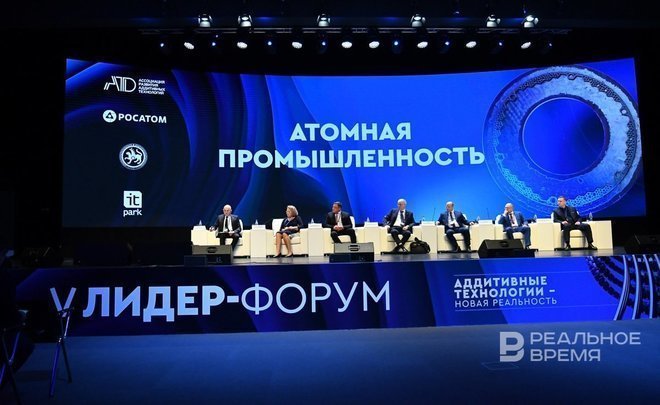
“I saw industrial 3D printers for the first time 9 years ago and was amazed. It seemed that it would be in some distant future, but today we have seen it at the exhibition," Rustam Minnikhanov admired the speed of penetration of additive technologies at the V Additive Technologies — New Reality Leader Forum in Kazan. Rosatom is “pushing” a federal programme worth 20 billion rubles for them, and the state corporation proposed to Tatarstan to create the Additive Technologies Centre (ATC) on the basis of the Ural Civil Aviation Plant (UZGA) and an educational ATC based on the KNRTU-KAI. However, there is no final decision, since it is necessary to form a package of orders for the future until 2030 in the republic in order to have a guarantee of the introduction of new products.
Minnikhanov — about ATC: interested in the deepest cooperation with Rosatom
Additive technologies, or industrial 3D printers for the production of complex parts, are still perceived as fantastic innovations incompatible with Russian reality. However, the industrial revolution has engulfed more and more countries in the world, where traditional methods of manufacturing parts on lathes and milling machines are being abandoned in favour of printing on 3D printers by layer-by-layer filling of a three-dimensional structure (plastic, metal, concrete are used as the main raw materials).
For the first time, industrial 3D printers were presented at the exhibition in the Bashir Rameev IT Park, organised by Rusatom RDS, an industry integrator in the field of technology and electronics production (part of Rosatom State Corporation). This forum has secured the status of the main Russian platform where the latest achievements in the field of additive technologies are exhibited and new solutions are developed.
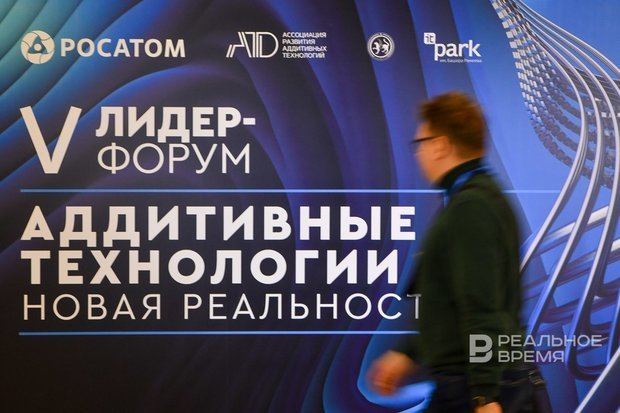
This time, it has been held outside Moscow for the first time. A large team of Rosatom State Corporation under the leadership of Andrey Shevchenko, the director for technological development, arrived in Kazan. Together with him, there were CEO of Rusatom — Additive Technologies PLC (RuSat PLC) Ilya Kavelashvili and head of ARAT Association and Advisor to the President of TVEL JSC Olga Ospennikova.
“Tatarstan intends not only to act as an active consumer of additive manufacturing products, but is also ready to play the role of a generator of key solutions. In this work, we are interested in the deepest cooperation with the industry leader — Rosatom State Corporation," Rustam Minnikhanov said at the opening of the forum, launching the race of Tatarstan enterprises in the development of new 3D technologies.
Ministry of Industry and Trade of Russia adheres to a conservative assessment
The rais of Tatarstan believes that the transition to additive technologies will make enterprises competitive, as more and more companies use this resource. Referring to experts, he said that two-thirds of all products manufactured in the world by 2023 will contain printed components.
“There is also an explosive growth of additive manufacturing in our country. Last year alone, the turnover of companies working in this field increased five times," Rustam Minnikhanov said.
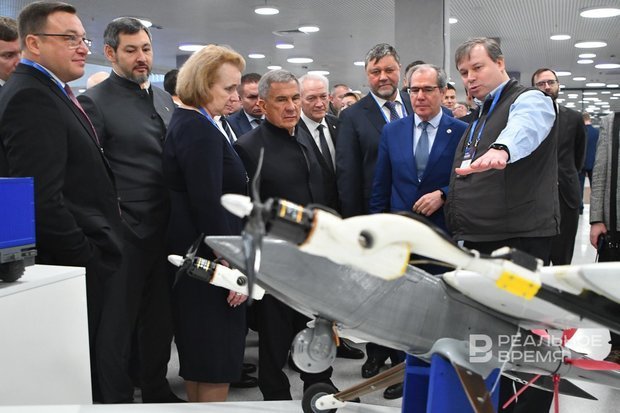
Later, Andrey Shevchenko, the director for technological development of the corporation, clarified that the volume of the global market for additive technologies will grow to $72.5 billion by 2030, and 3D metal printing technologies will become the most in demand. In Russia, it is less: now 3.9-5 billion, it is projected to grow to 23.5 billion. However, there are two scenarios of development. The Ministry of Industry and Trade of the Russian Federation adheres to a conservative assessment and predicts an increase in demand to 13.2 billion rubles, Shevchenko said. What is the reason for the two-fold difference was not specified.
But there is a significant difference in how these technologies work in Russia and abroad. If the market in our country will grow due to the purchase of equipment and materials, then abroad — at the expense of services, the manager of Rosatom added.
Interface between science and industry for 20 billion rubles
Just like that, it will not work to take and put an industrial 3D printer in the workshop. Any product needs to be certified, so R&D is needed to create it, the participants of the panel session noted. To this end, Rosatom is “pushing” a comprehensive scientific and technological programme that compensates enterprises for R&D costs. The estimated cost is 20 billion rubles. The programme mechanism provides an interface between science and industry.
“In general, the programme is designed to bring products to the market. Here, 50% of the costs are paid by the state in the form of R&D, and the remaining 50% is private investment in the product itself. The programme will be presented to the federal government next Wednesday," said Andriy Shevchenko. “There will be many areas in it: aviation, nuclear energy, shipbuilding. Maybe there will be construction, here we saw a 3D printer that builds houses," he said.
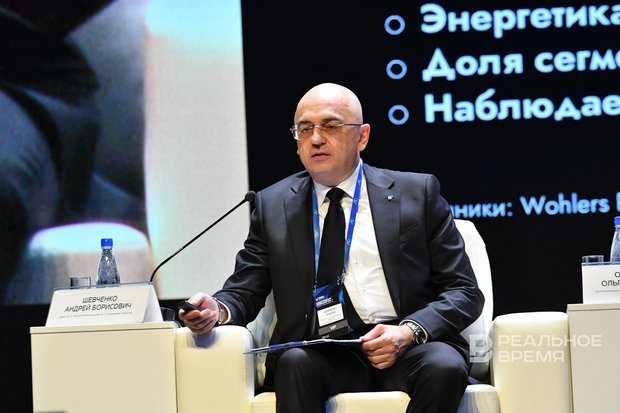
However, he does not expect a quick approval of the programme. “We have approved a similar programme for composite materials in the government for almost 4 years. The last time we convinced the Ministry of Finance of the Russian Federation. But there is a precedent, the programme has been adopted (Mishustin signed it in July this year, the cost is almost 10 billion rubles for 3 years). So we shlould not lose optimism," he urged.
Relying on UWSA and KNRTU-KAI?
Tatarstan has been offered to create centres of additive technologies (ATC): in aviation on the basis of the Ural Works of Civil Aviation (UWSA), and in education — on the basis of KNRTU-KAI," Andrey Shevchenko told Realnoe Vremya.
“Before the panel session, we discussed this topic with Rustam Minnikhanov. There is an understanding regarding one of the options that we will consider: UWSA as a basic enterprise, and in education — KNRTU-KAI. But this is not final," he said.
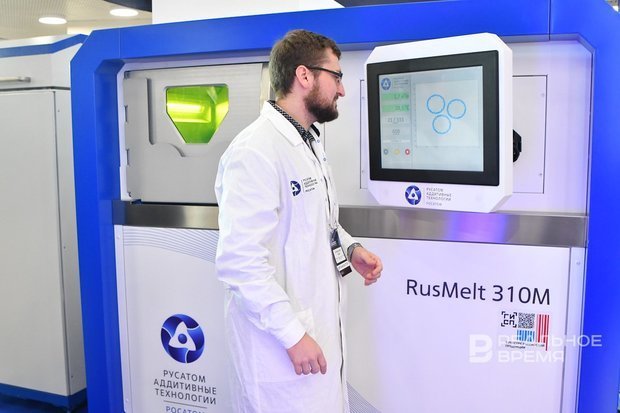
According to him, the creation of a data centre depends on whether there will be demand for their services from Tatarstan enterprises. “We need to gather the heads of enterprises and form an order on their basis," he explained. As a result, they decided to create a roadmap in the near future with a perspective for 5-7 years, Shevchenko concluded.
“There are a lot of people who want to get the status of ATC”
The head of the Kazan branch of UWSA, Ramil Akhmadeev, confirmed to Realnoe Vremya the fact of working on the project. “We have experience in the use of AT in the manufacture of various parts. Within the framework of cooperation with UWSA partners, we plan to open sites with new equipment. The idea was born this year, now our interests have coincided with Rosatom State Corporation," he said.
The rector of KNRTU-KAI, Timur Alibayev, said that “there are a lot of people who want to get the status of ATC”, apparently referring to the KFU. But he is sure the KAI will take over. “Because we have large investments in additive technologies — this is about 200 million rubles. It is since 2023 that our R&D has been producing tangible results. If earlier R&D works was carried out for 10-12 million rubles, now — for 50 million," he is proud.
“It all depends not only on the university. Scaling should go with the introduction of technologies, our companies should be ready," he explained.